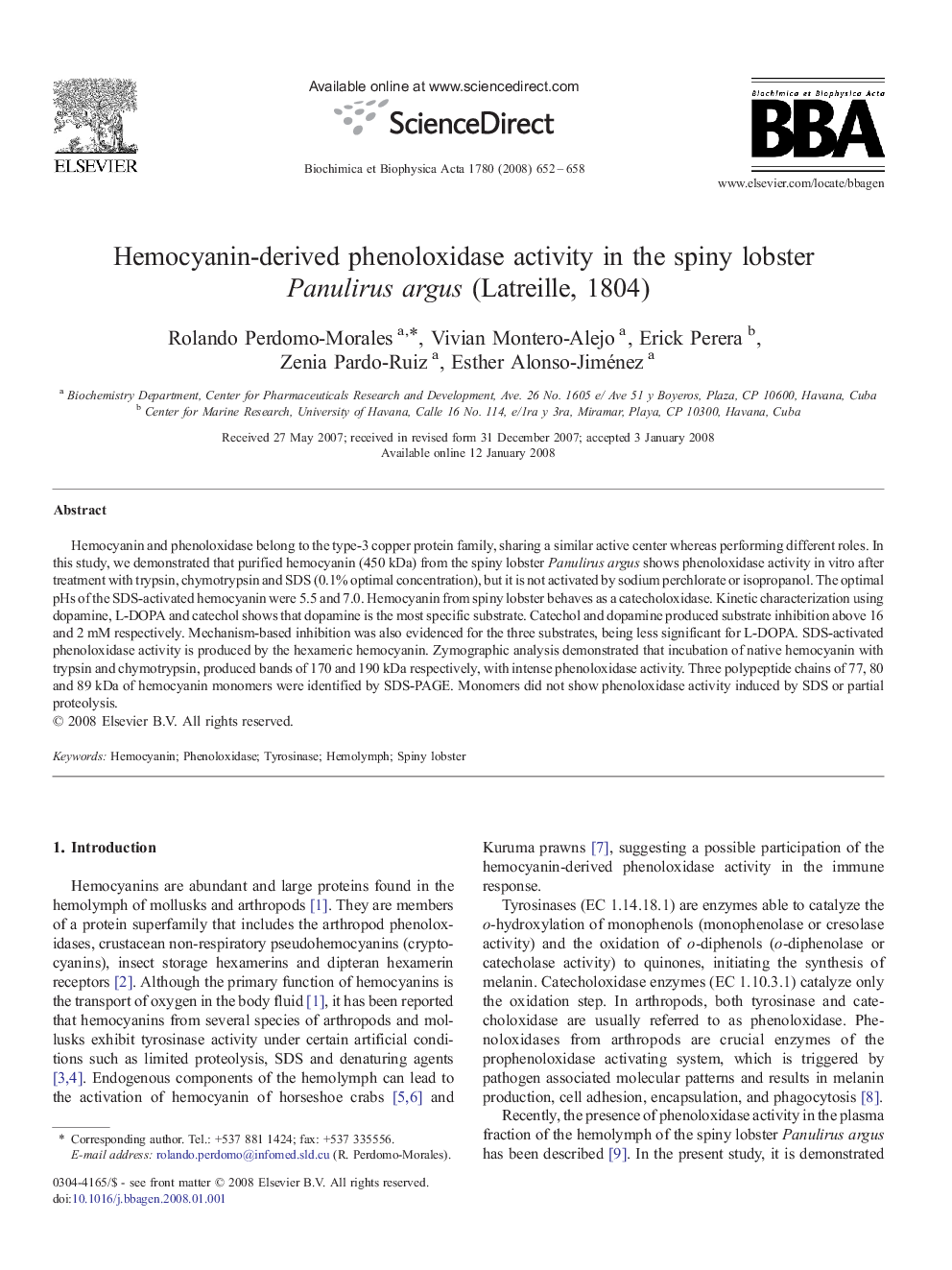| Article ID | Journal | Published Year | Pages | File Type |
|---|---|---|---|---|
| 1948363 | Biochimica et Biophysica Acta (BBA) - General Subjects | 2008 | 7 Pages |
Hemocyanin and phenoloxidase belong to the type-3 copper protein family, sharing a similar active center whereas performing different roles. In this study, we demonstrated that purified hemocyanin (450 kDa) from the spiny lobster Panulirus argus shows phenoloxidase activity in vitro after treatment with trypsin, chymotrypsin and SDS (0.1% optimal concentration), but it is not activated by sodium perchlorate or isopropanol. The optimal pHs of the SDS-activated hemocyanin were 5.5 and 7.0. Hemocyanin from spiny lobster behaves as a catecholoxidase. Kinetic characterization using dopamine, L-DOPA and catechol shows that dopamine is the most specific substrate. Catechol and dopamine produced substrate inhibition above 16 and 2 mM respectively. Mechanism-based inhibition was also evidenced for the three substrates, being less significant for L-DOPA. SDS-activated phenoloxidase activity is produced by the hexameric hemocyanin. Zymographic analysis demonstrated that incubation of native hemocyanin with trypsin and chymotrypsin, produced bands of 170 and 190 kDa respectively, with intense phenoloxidase activity. Three polypeptide chains of 77, 80 and 89 kDa of hemocyanin monomers were identified by SDS-PAGE. Monomers did not show phenoloxidase activity induced by SDS or partial proteolysis.
